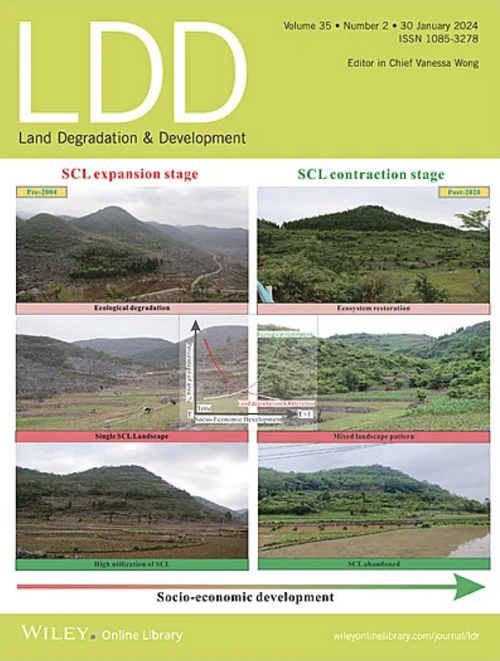Effects of Repeated Low‐Severity Fires on Particle Detachment Capacity and Soil Properties in Rills of Semi‐Arid Forests
IF 3.6
2区 农林科学
Q2 ENVIRONMENTAL SCIENCES
引用次数: 0
Abstract
In forest ecosystems, in addition to wildfire hazards, low‐severity fires may alter some soil properties and trigger soil erosion, especially on long and steep slopes. The literature on the hydrological effects of fire with variable intensity is ample, but the studies on the post‐fire variability of soil detachment capacity in rills (hereafter求助全文
约1分钟内获得全文
求助全文
来源期刊

Land Degradation & Development
农林科学-环境科学
CiteScore
7.70
自引率
8.50%
发文量
379
审稿时长
5.5 months
期刊介绍:
Land Degradation & Development is an international journal which seeks to promote rational study of the recognition, monitoring, control and rehabilitation of degradation in terrestrial environments. The journal focuses on:
- what land degradation is;
- what causes land degradation;
- the impacts of land degradation
- the scale of land degradation;
- the history, current status or future trends of land degradation;
- avoidance, mitigation and control of land degradation;
- remedial actions to rehabilitate or restore degraded land;
- sustainable land management.
 求助内容:
求助内容: 应助结果提醒方式:
应助结果提醒方式:


